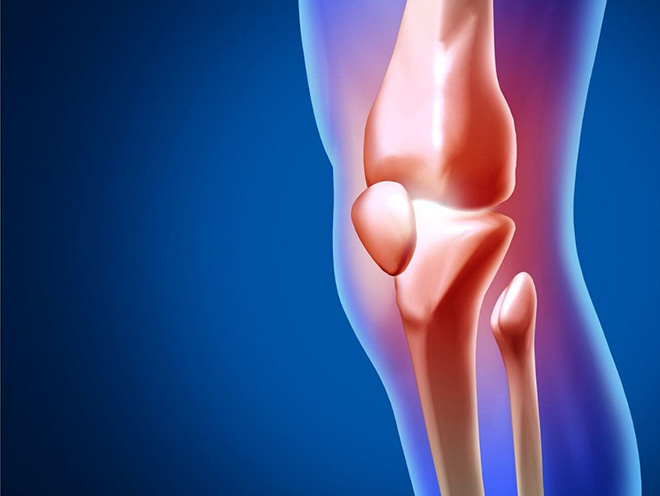 |

What is soft tissue cancer?
All malignant tumors that originate in the fiber, fat, smooth muscle, striated muscle, synovial membrane, blood vessel, lymphatic vessel and locate in soft tissues (with the exception of visceral organs), are called as soft tissue cancers or soft tissue sarcomas as well. Sarcoma can occur in the soft tissues throughout the body, especially in the limbs, trunk, retroperitoneal part and pate; among these, the limbs are mostly seen, about 60% in all cases. The incidence rate of soft tissue cancer is approximately 2/100,000 to 3/100,000, which amounts for 1% among adult’s malignant tumors, but it has no sexual orientation. Generally the elderly have a higher prevalence. Soft tissue cancer is very easy to spread to the surrounding normal tissue and its fatality rate is 2%.
So can middle and late-staged soft tissue cancer be cured? Minimally invasive techniques with few side effects and minimal trauma can help testicular cancer patients avoid surgical resection and suffering from traditional radiotherapy, improve their quality of life and effectively prolong their survival.
For more knowledge about cancer, please click online doctors for consultation.




Soft tissue tumors are tumors that occur in mesenchymal tissue, including epidermal and dermal benign tumor, cystic lesion, and malignant tumor located in the deep fascia. Most of the soft tissue tumors are benign tumors; manifestations of benign and malignant tumors are similar. Whatever malignant tumors that happened in the soft tissue, in principle are called sarcoma.
Causes of soft tissue cancer:
Currently, causes of soft tissue cancer have not been defined yet, but it is well-known that the causes of soft tissue cancer are not single.
Congenital malformation: angeioma is commonly seen among infants and children. The vast majority of such lesions are found after birth. As children grow, vascular lesions will grow correspondingly and proportionally and never fade away without rapid growth history.
Familial heredity: many studies show that many tumor cells manifest chromosomal abnormalities. People who have chromosomal abnormalities would own higher incidence rate than that of normal people, and also have the characteristic of familial heredity.
Foreign substance stimulation: according to animal experiment and clinical observation, long term of foreign substance stimulation on the body may induce soft tissue cancer.
Chemical materials stimulation: an epidemiological survey has discovered that workers who are long-term exposed to polyvinyl chloride have high risk of suffering from angiosarcoma of the liver
Trauma: a considerable portion of soft tissue cancer patients have clear trauma history on the site of tumor.
Symptoms of soft tissue tumor
1. Systemic manifestation: both benign tumor patients and early malignant tumor patients rarely have obvious systemic symptoms. Late malignant tumor patients, such as bone sarcoma, rhabdomyosarcoma or metastatic carcinoma, can have cachexia symtoms, such as anaemia, emaciation, loss of appetite, weight loss, fever, etc.
2. Local manifestation: pain of bones, joints, soft tissue, osseous or soft tissue mass, dysfunction, these are common local manifestations of malignant bone tumors.
(1) Pain: pain is the most common symptom of tumors of rapid growth. At the beginning, the pain is light and intermittent, and gradually develops into a violent persistent pain. This is mainly due to tension or pressure imposed by bone tumor to sensitive periosteum or endosteum. But the pain does not necessarily explain the tumor is malignant, because some benign tumors, such as osteoid osteoma may cause pain due to reactive bone growth and pain. If pain suddenly and violently attacks, this may easily cause pathological fracture.
(2) Mass: benign tumors often present hard and non-tender lumps. Malignant tumors of rapid growth often present as a diffuse swelling, tenderness, skin fever, superficial venous engorgement.
(3) Dysfunction and compression: if tumor is close to joint, activities will be restricted; pain would increase when the joint moves. For tumors occurred in spinals, no matter benign or malignant, spinal cord compression would be caused and further lead to paralysis.
(4) Malformations: patients in growth age or patients with pathological fractures, may suffer from malformation, for instance, multiple osteochondroma would affect growth, and even cause limb bending with unequal lengths. Enchondroma can make bonelets of hand and foot deformed. If tumor invades into epiphyseal plate, then it would cause maldevelopment.
Experts of St. Stamford Modern Cancer Hospital Guangzhou remind: the above symptoms are common symptoms of soft tissue tumor, if similar circumstances occur, patients should go to standardized hospital a.s.a.p. for examination or treatment.
For more knowledge about cancer, please click online doctors for consultation.
Early soft tissue tumors have few obvious systemic symptoms, while advanced malignant soft tissue tumors may cause symptoms like fever, anemia, loss of appetite, weight loss. It is not difficult to distinguish between malignant and benign soft tissue tumors. Based on the patient’s clinical situation and history and combined with the following inspection methods, soft tissue tumors can be detected:
1. X -ray examination: X -ray is helpful in further understanding the range and transparency of soft tissue tumor and its relationship with nearby sclerotin. The clear boundary often suggests benign tumors while clear boundary with calcifications often suggests malignant soft tissue tumors, which are often seen in synovial sarcoma, rhabdomyosarcoma, and so on.
2. Ultrasound imaging examination: it can reveal the range and envelope boundary of the tumor, as well as the echo of internal tumor tissues, so as to distinguish whether it is benign or malignant. Malignant soft tissue tumor has big body, unclear boundary, and vague echo, which usually occur in rhabdomyosarcoma, synovial myosarcoma, malignant fibrohistiocytoma, etc. Ultrasound can also guide acupuncture aspiration cytology examination for deep tumors.
3. CT examination: as CT can identify the density and space of soft tissue tumor, it is a commonly used method to diagnose soft tissue tumor in recent years.
4. MRI examination: it can make up the shortcoming of X-ray in diagnosing soft tissue tumors. It can reveal all the layers of the tissues and the range of the tumor with a longitudinal section. It provides even clearer images of retroperitoneal soft tissue tumors, tumors spreading to the butt or thigh from pelvis and tumors in the popliteal fossa, as well as tumor infiltration to bone or bone marrow. It is a good basis to settle the treatment plan.
5. Pathological examination
(1) Cytological examination: it is a simple, quick and accurate pathological examination method. It is most suitable for following situations:
a. Ulcerated soft tissue tumors: microscopy on smear or scraping of the sample.
b. soft tissue tumor with pleural fluid or ascites: centrifugalize and enrich the fresh sample and then make the smear
c. acupuncture aspiration smear is suitable for tumors that have big body, situate in deep area and to be treated with chemotherapy or radiotherapy, as well as transferred and recurrent lesion.
(2) Protractor biopsy: it can be used when ulceration has happened to the soft tissue tumor and cytological smear can not diagnose the tumor.
(3) Incisional biopsy: it is mainly used in surgery.
(4) Excisional biopsy: it is suitable for small soft tissue tumors. The normal tissues surrounding the tumor can also be taken for pathological examination.
As the tissue source of soft tissue tumor are complicated and various, apart from common HE staining, most diagnoses of the tumors require assistance of immunohistochemistry or electron microscope during pathological examination.
Experts from St. Stamford Modern Cancer Hospital Guangzhou remind that: soft tissue tumors can get a better treatment effect with early detection and treatment. Therefore, once any discomfort happens, one should go to regular hospital for examination and treatment as soon as possible.
For more knowledge about cancer, please click online doctors for consultation.
Staging of soft tissue cancer
Tumor staging depends on the size of the tumor, pathological grading and whether there is a nearby lymph nodes metastasis or distant metastasis. Soft tissue cancer of adults shall be divided into 4 stages: Stage I, II, III means there is no nearby lymph nodes metastasis or distant metastasis. During Stage IV, if there is regional lymph nodes metastasis, then it is Stage IVa; if there is distant metastasis, then it is Stage IVb. Pathological grading mainly depends on tumorous mitotic values.
For more knowledge about cancer, please click online doctors for consultation.
 Leave
Leave